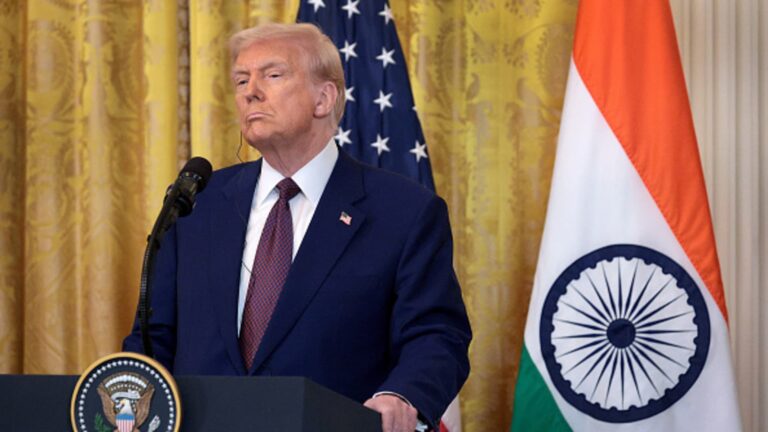U.S. President Donald Trump listens as Indian Prime Minister Narendra Modi speaks during a joint press conference in the East Room at the White House on February 13, 2025 in Washington, DC.
Alex Wong | Getty Images News | Getty Images
President Donald Trump said Wednesday that India will pay a tariff of 25% beginning Aug. 1, in addition to a “penalty” for what he views as unfair trade policies and for India’s purchase of military equipment and energy from Russia.
The 25% tariff rate is modestly lower than what he imposed on India on “liberation day,” when he announced a 26% rate on the key trading partner.
But it’s still on the higher end of what Trump appeared to be considering for India. Trump on Tuesday said he was considering a rate between 20% and 25%.
“Remember, while India is our friend, we have, over the years, done relatively little business with them because their Tariffs are far too high, among the highest in the World, and they have the most strenuous and obnoxious non-monetary Trade Barriers of any Country,” Trump wrote on Truth Social.
“Also, they have always bought a vast majority of their military equipment from Russia, and are Russia’s largest buyer of ENERGY, along with China, at a time when everyone wants Russia to STOP THE KILLING IN UKRAINE — ALL THINGS NOT GOOD!” he continued.
“INDIA WILL THEREFORE BE PAYING A TARIFF OF 25%, PLUS A PENALTY FOR THE ABOVE, STARTING ON AUGUST FIRST,” he said.
The White House did not respond to CNBC’s request for comment on what the additional penalty might be.
A spokesperson for the Embassy of India in Washington, D.C., did not immediately reply to a request for comment on the tariff rate or the penalty.
In a subsequent Truth Social post on Wednesday, Trump said, “WE HAVE A MASSIVE TRADE DEFICIT WITH INDIA!!!”
Trump has repeatedly said that the goal of his sweeping tariff regime is to dramatically cut the United States’ trade deficit with other countries.
Economists have questioned this motive, however. They note that importing goods from countries with lower labor costs means that Americans can pay lower prices for finished products.
There is also deep uncertainty as to whether American workers would be willing or able to do the low-skilled and potentially dangerous jobs needed to produce the goods typically imported from overseas, like clothing, toys and chemicals.
Earlier this year, Trump went so far as to declare America’s global trade deficit an emergency threat to national security in order to claim the legal authority to impose unilateral tariffs without consulting Congress.
Trump’s plans to impose an additional “penalty” on India over its trade with Russia also comes as he has increased his rhetoric in recent weeks over President Vladimir Putin’s invasion of Ukraine.
In an escalation earlier this month, the president threatened to implement secondary tariffs of 100% starting in early August on countries that buy Russian oil and gas, unless the Kremlin reaches a ceasefire deal with Ukraine.
China, India, Brazil and other major U.S. trade partners that rely on Russian energy would be hit particularly hard by a tariff like this.
